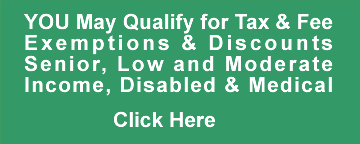The Coalition of Sensible Taxpayers has decided to take NO POSITION on the Kentfield School District parcel tax — neither endorsing nor opposing.
KSD’s superior schools depend on parcel tax revenues for current programs and services. But the proposed tax measure has drawbacks.
To help voters make educated decisions, we’ve analyzed the KSD ballot measure and are providing below the facts needed to make an informed choice. We also encourage voters to learn more by attending the district’s “Budget Meeting”, Monday Jan 22 6-7:30PM, Kent School Library on College Avenue, Kentfield. This will be the district’s only public forum at which you can ask questions, make comments, and find out about the parcel tax.
DESCRIPTION OF KSD PARCEL TAX, “MEASURE A”
This is a special, single-issue, all-mail election. Voter information guide and sample ballots arrive around February 1, and can be previewed here.
Ballots go out the week of February 5 and must be postmarked by March 6. Watch for your ballot!
Here’s what the proposed tax measure does:
– Renews/replaces current parcel tax. Raises residential rate to $1,498 from current $1,143 (+31%); commercial properties are all reduced to the new “uniform” level.
– Brings KSD into compliance with a 2013 CA Supreme Court decision restricting school districts to a “uniform school parcel tax” once any existing parcel tax expires. KSD’s current parcel tax sunsets 6/30/19.
– Higher residential rate would be effective immediately – 7/1/18 – though KSD is not required to adopt a uniform parcel tax before 7/1/19. Implementing a uniform parcel tax one year early means homeowners in fiscal 2018/9 pay an extra $757,000 (about $300 per home) that would have been funded by commercial property owners under the current parcel tax.
– Maintains current funding: The tax would be “revenue neutral” – Higher residential rates offset the cut in commercial parcel tax revenues. The new tax does not generate extra funds for KSD, other than via annual escalators over time.
– Escalators: The tax increases 3% every year (vs 5% in current parcel tax). These are referred to in the summary ballot language as “annual inflation adjustments.”
– Term: 10 years. Tax would expire 6/30/2028.
– Senior exemptions: available to those who apply
– Disabled exemptions: available for those who annually prove low income.
MAJOR BENEFIT OF THIS TAX MEASURE:
– Maintains revenues of this top rated school district, enabling it to sustain all services and activities.
– Revenue neutral replacement of current parcel tax.
– Provides $4.5 million in annual funding, 24% of the district’s current $17.9 million revenue.
– Resolves uncertainty. Voters rejected a similar KSD parcel tax in Nov 2016. A second failed ballot measure would cloud the outlook.
WHAT IF THIS TAX MEASURE DOESN’T PASS (2/3 MAJORITY REQUIRED)?
– Current parcel tax remains in place one more year — through 6/30/19. District revenues are unaffected, as commercial properties’ higher rates continue to compensate for lower residential rate. Residential property owners would pay $1200 for fiscal 2018/9.
– A third try at a parcel tax would be attempted. Fall 2018? This costs the district time and money, and runs the risk of a failed 3rd try.
– If no parcel tax is passed by March 2019, significant layoffs are probable for the following school year. That’s because 24% of KSD revenues are at risk. Teacher compensation (the district’s main expense) averages $100,000 annually including health benefits and pension contribution.
WHAT WILL THE TAX BE USED FOR?
– Educational services. KSD’s parcel tax revenue is restricted: it funds specific educational services, supporting small class sizes, specialized math and technology instruction, and vital services such as libraries and counselors. The remaining 76% of KSD’s funds are largely unrestricted and will continue to fund the majority of teaching and educational services — plus administrative costs and pensions.
– Mitigates rising pension expense’s impact on school operations and budget. California law effective fiscal 2014/5 requires school districts to sharply increase their pension contributions to the California Teachers’ Retirement System over a 7 year period. For KSD in fiscal 2020/1, its annual CALSTRS pension contribution will be $1.4 million higher than in fy2013/4, BEFORE taking into account the impact of ongoing base compensation increases . KSD, like all school districts, must comply with this unfunded state mandate, which puts pressure on the budget.
HOW DOES THIS TAX MEASURE DIFFER FROM THE 2016 ONE THAT DIDN’T PASS?
The tax measure is similar to KSD’s failed 2016 measure, with these differences:
– Escalators reduced to 3% from 5% — closer to taxpayers’ income growth.
– Uniform rate is effective one year earlier (see above).
– Expires 1 year earlier, because it’s effective sooner.
OTHER THINGS VOTERS SHOULD KNOW:
– Highest parcel tax in Marin: KSD’s uniform parcel tax of $1,498, if enacted, will be Marin County’s highest. In fiscal 2018/19, other top school districts’ uniform parcel tax will be: Mill Valley $1,254; Ross $1,044; Larkspur-Corte Madera $749 and Reed (Tiburon) $572.
– Another parcel tax measure coming: Tamalpais Union High School District, which has a budget deficit, will seek voter approval later in 2018 to increase and extend their parcel tax. Homeowners subject to the KSD parcel tax also pay TUHSD’s.
– Mail-in election favors passage: KSD’s use of an off-cycle single-issue mail-in election raises chances the parcel tax passes, as there will not be other tax measures on the ballot and the residents who care most make up a large percentage of special-election voter turnout.
– Tax may not be deductible, depending on your situation: Beginning in 2018, taxpayers can’t deduct state and local taxes exceeding $10,000/year from Federal taxes. State and local tax payments will take a bigger bite out of many KSD residents’ incomes.
CHECK OUR WEBSITE PERIODICALLY FOR FOR ANY UPDATES ABOUT THE KSD PARCEL TAX



